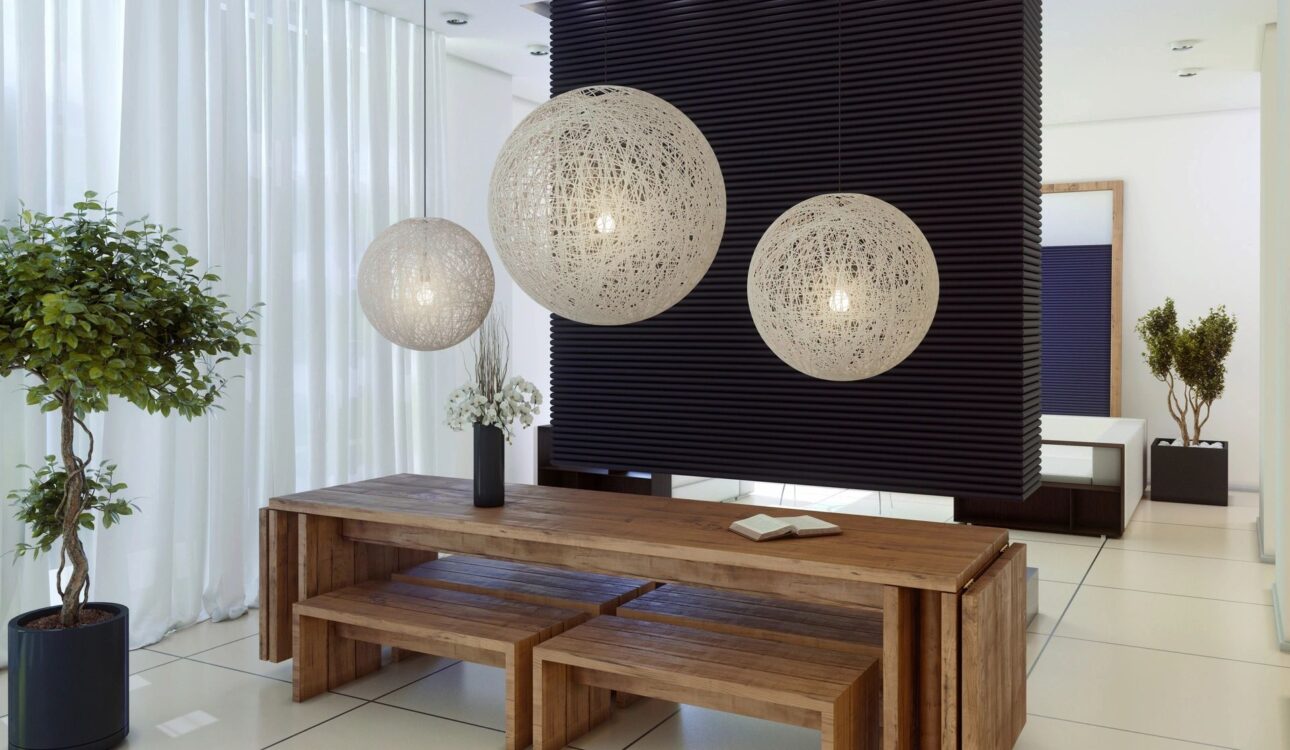Positive Impact of Sound Optimization
In a world filled with noise, finding tranquility within the walls of our homes is becoming increasingly essential. Understanding the science of sound and how it influences our living spaces can significantly impact our well-being. Creating acoustically optimized interiors for peaceful living is not just about minimizing noise but also about enhancing peaceful living. Let’s delve into the intricacies of sound optimization and how it can transform your living environment.
Understanding Sound Dynamics
To truly grasp the concept of sound optimization, one must first understand the basics of sound propagation. Sound travels in waves through various mediums, including air, water, and solids. In interior spaces, these waves bounce off surfaces, creating reverberations and echoes that can either enhance or disrupt the overall acoustic experience.
Designing for Acoustic Harmony
Creating acoustically-optimized interiors involves strategic design choices aimed at minimizing sound reflections and maximizing absorption. Incorporating sound-absorbing materials such as acoustic panels, curtains, and carpets can significantly reduce reverberations, resulting in a more serene living environment.
Harmonizing Aesthetics with Functionality
Contrary to popular belief, achieving optimal acoustics does not require sacrificing aesthetics. By integrating sound-absorbing elements seamlessly into interior design, one can maintain both functionality and visual appeal. From stylish acoustic wall panels to decorative soundproofing solutions, the options for harmonizing aesthetics with functionality are endless.
Enhancing Productivity and Concentration
In environments where concentration and productivity are paramount, such as home offices and study spaces, sound optimization plays a crucial role. By minimizing distractions and external noise disturbances, individuals can enhance their focus and cognitive performance, ultimately leading to increased productivity and efficiency.
Creating Serene Living Spaces
Our homes should serve as sanctuaries of peace and tranquility, shielded from the chaos of the outside world. Through thoughtful sound optimization techniques, homeowners can create serene living spaces conducive to relaxation and rejuvenation. From bedroom retreats to cozy living areas, every corner of the home can benefit from acoustically-optimized design.
Harnessing the Power of Nature
Nature has long been revered for its soothing sounds, from the gentle rustle of leaves to the calming flow of water. Incorporating natural elements into interior design, such as indoor water features and greenery, can mimic these tranquil sounds, further enhancing the overall acoustic ambiance of a space.
Maximizing Comfort and Well-being
Sound optimization goes beyond mere aesthetics; it directly impacts our comfort and well-being. By creating environments free from unwanted noise pollution, individuals can experience improved sleep quality, reduced stress levels, and enhanced overall happiness. Investing in acoustically-optimized interiors is an investment in one’s health and happiness.
Conclusion
In a world filled with constant noise and distractions, creating acoustically optimized interiors for peaceful livings is essential for promoting peace, tranquility, and well-being. By understanding the science of sound and implementing strategic design choices, individuals can transform their living spaces into havens of serenity. From enhancing sleep quality to boosting productivity, the benefits of sound optimization are vast and far-reaching. Invest in the science of sound today and embark on a journey towards a more peaceful way of living.
Frequently Asked Questions (FAQ’s)
Q: How does sound optimization improve sleep quality?
A: Sound optimization reduces disruptive noises, creating a conducive environment for restful sleep. By minimizing interruptions, individuals can achieve deeper, more rejuvenating sleep cycles.
Q: What are some common sound-absorbing materials?
A: Common sound-absorbing materials include acoustic foam panels, fiberglass insulation, cork tiles, and heavy curtains. These materials help minimize sound reflections and reverberations, enhancing acoustic comfort.
Q: Can sound optimization benefit individuals with sensory sensitivities?
A: Yes, sound optimization can significantly benefit individuals with sensory sensitivities, such as those with autism or hyperacusis. By creating quieter environments, it reduces sensory overload and promotes a sense of calm and security.
Q: How can I incorporate sound-absorbing elements into my existing decor?
A: You can seamlessly integrate sound-absorbing elements into your decor by choosing stylish options that complement your existing aesthetic. From decorative acoustic panels to upholstered furniture, there are numerous ways to enhance both the acoustics and visual appeal of your space.
Q: Is sound optimization only relevant for residential spaces?
A: No, sound optimization is beneficial for a wide range of environments, including commercial spaces, educational facilities, healthcare settings, and more. Any space where noise control and acoustic comfort are priorities can benefit from sound optimization techniques.
Q: Are there DIY methods for improving acoustic comfort at home?
A: Yes, there are several DIY methods for improving acoustic comfort at home, such as hanging thick curtains, adding rugs or carpets, and strategically placing furniture to absorb sound. While professional acoustic solutions offer optimal results, DIY methods can be a cost-effective starting point.






